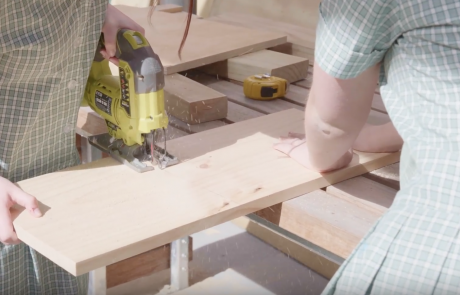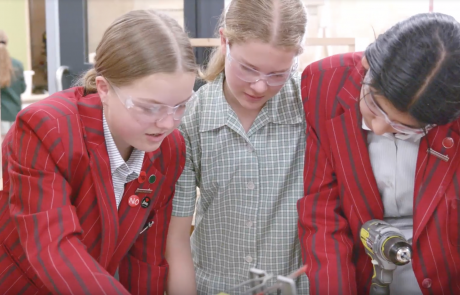English
Ko te reo te tuakiri
Ko te reo tōku ahurei
Ko te reo to ora.
Ākonga are increasingly active global citizens who are readers, creators, consumers, problem solvers and critical thinkers. Their use of language allows them to communicate meaning accurately and coherently for a range of authentic audiences and purposes. They listen respectfully to other people’s views, build on and critique their ideas, and are willing to reflect on their ideas in the light of their group/class discussions, as well as their reading and viewing. They are self-aware, empathetic independent learners who purposefully and flexibly engage with increasingly complex written, oral and visual texts, including texts produced for an adult audience. They are expected to work effectively, individually and collaboratively.
Mathematics
Kei hopu tōu ringa, ki te aka tāepa, engari kia mau ki te aka matua.
Ākonga will use developing mathematical ideas and methods to solve practical problems. They can problem-solve by finding out for themselves, ask and answer questions of their own, and share what they have discovered with others. Ākonga can communicate mathematically by identifying and recording information or calculation(s) needed to solve a puzzle or problem. They can present solutions to puzzles and problems in an organised way. They can reason by describing, interpreting and explaining what they see and how to use this as a basis to inform their thinking and reasoning. Ākonga can explain decisions, methods and results in pictorial, spoken or written form, using mathematical language.
Science
Mā te whakaaro nui e hanga te whare;
mā te mātauranga e whakaū.
Ākonga can develop scientific knowledge and use it to solve problems and develop an understanding of the world. They can learn to support their work with specific examples, and communicate ideas using science vocabulary appropriately. They can explore their interests and passions through designing and carrying out their own investigations. Ākonga should be able to work collaboratively with peers and teachers on science problems and projects. They should be able to design a fair test, gather data using techniques to ensure reliability and validity, by controlling variables, making careful measurements and doing multiple trials. They can represent data with tables, diagrams and graphs, and look for patterns and trends. Ākonga will begin to engage with, and respond to, real-life issues and should be able to argue an opinion based on scientific evidence. They will begin to critique scientific evidence and identify when evidence supports a specific claim. Ākonga will begin to reflect on their learning, and understand that trial and error allows them to develop new approaches, and is a normal part of working scientifically.
Social Science
Unuhia te rito o te harakeke kei whea te kōmako e kō?
Whakatairangitia – rere ki uta, rere ki tai;
Ui mai koe ki ahau he aha te mea nui o te ao,
Māku e kī atu he tangata, he tangata, he tangata!
Ākonga build knowledge about how societies work. They can investigate and explain a range of values and perspectives using Social Studies concepts and conventions. They can analyse and evaluate data. They understand their responsibilities under Te Tiriti O Waitangi and will work to ensure biculturalism is fundamental within all actions. They can carry out an independent, or collaborative social inquiry. Ākonga can reflect on their learning so that they can take personal and collective responsibility for taking action as critical, informed and responsible citizens.
Physical Education and Health
He oranga ngākau, he pikinga waiora.
Ākonga are active participants who acquire foundation motor skills across all components of physical fitness, that they can transfer to almost any physical context. As a result they find physical activities that they participate in for joy. They develop their understanding of Health and Physical Education disciplinary approaches, language and conventions and can communicate to a specific audience physically, verbally, visually and in writing, to show themselves as promoters of health and hauora. They can use interpersonal skills to communicate, problem-solve and collaborate with others to achieve common goals. They can think critically, demonstrate initiative, grit and self-management, to make health enhancing choices for themselves and others and enhance their self-esteem. Ākonga demonstrate an understanding of perspective-making and open-mindedness by realising others may hold different points of view from their own, or have different cultural backgrounds and experiences, and can explain how their attitudes and values influence their actions and can impact self, others and society.
The Arts
Te toi whakairo, ka ihiihi, ka wehiwehi, ka aweawe te ao katoa
Ākonga are involved in the creative process, which draws heavily upon the capabilities that are essential for highly effective learning. They have a strong foundation in artistic literacy, and are able to demonstrate artistic fluency and respond reflectively to the work of others. They can actively participate in the creation of original works, following a process of conceptual development. They can think critically to solve issues that arise during the creative process, and use a range of different artistic perspectives so that they can make informed choices to demonstrate their learning. Ākonga can work individually and collaboratively in a range of different contexts and engage with the wider school community, in a culturally inclusive manner.
Languages
Ko tōu reo, ko tōku reo, te tuakiri tangata.
Tīhei uriuri, tīhei nakonako.
Year Nine Ākonga understand target language structures required to be able to produce and respond to questions and requests in familiar contexts. They are building knowledge by recognizing and demonstrating that the target language is organized in particular ways. They are beginning to make connections between their own language and culture, and the language and culture being learned. Ākonga are beginning to show awareness when interacting in the target language with others by using cultural and linguistic knowledge to understand and communicate personal and everyday ideas and information.
Year Ten Ākonga understand the target language structures required to be able to express and respond to personal needs, wants and interests. They use knowledge of the target language and culture to understand and construct simple texts that describe aspects of their own background and immediate environment. They are increasingly comparing and contrasting their own languages and cultural practices with the language and culture being learned. Ākonga are able to use cultural knowledge to communicate appropriately in authentic situations.
Te Reo Maori
Year Nine Ākonga are aware of and use appropriate tikanga, as applied to the classroom. They use appropriate manaakitanga towards each other, and guests. Ākonga value and practise tikanga in the classroom. They understand that te reo Māori has its own way of saying and doing things and demonstrate these differences in simple, everyday practice.
Year Ten Ākonga act appropriately to show respect for Māori protocols, and other cultures represented in their communities. They understand and explain ways in which te reo and tikanga are organised for different purposes. They use second language learning skills to avoid communication breakdowns. Ākonga use and respond to te reo required to express personal needs, wants, likes, dislikes and interests.
Technology
Kaua e rangiruatia te hāpai o te hoe; e kore tō tātou waka e ū ki uta.
Ākonga analyse their own and others outcomes to inform the development of design ideas for feasible outcomes. They undertake how evidence, reasoning and decision making in functional modelling contributes to the development of design concepts and how prototyping can be used to justify ongoing refinement of outcomes. Ākonga understand how people’s perceptions and acceptance of technology impacts on technological developments and how and why technological knowledge becomes codified. They understand the implications of changing technologies on different cultures within Aotearoa New Zealand.










